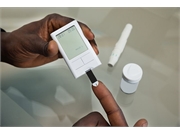Patients with higher comorbidity burden more likely to be treated with insulin for T2DM
FRIDAY, Feb. 21, 2020 (HealthDay News) — A higher proportion of older and multimorbid patients with type 2 diabetes achieve low hemoglobin A1c (HbA1c) levels, according to a study published online Feb. 19 in BMJ Open Diabetes Research & Care.
Rozalina G. McCoy, M.D., from the Mayo Clinic in Rochester, Minnesota, and colleagues examined patterns of glycemic control among 194,157 adults with type 2 diabetes. Comorbidity burden was assessed based on 16 comorbidities, classified as diabetes concordant (diabetes complications or risk factors), discordant (unrelated to diabetes), or advanced (life limiting).
The researchers found that 45.2, 30.6, 2.7, and 13 percent had only concordant comorbidities, concordant and discordant comorbidities, only discordant comorbidities, and one or more advanced comorbidity, respectively. The mean HbA1c was 7.7 percent among those aged 18 to 44 years versus 6.9 percent in those aged ≥75 years, and it was lower among those with comorbidities: 7.3, 7.1, 7.1, and 7.0 for those with concordant-only, discordant-only, concordant and discordant, and advanced comorbidities, respectively, versus 7.4 percent among those without comorbidities. With age, there was a decrease in the odds of insulin use (odds ratio [OR], 0.51 for age ≥75 versus 18 to 44 years); an increase in the odds was seen with accumulation of concordant (OR, 5.50 for at least three versus none), discordant (OR, 1.72 for at least three versus none), and advanced (OR, 1.45 for at least two versus none) comorbidities.
“Our study suggests ample opportunity for treatment deintensification among older patients and patients with advanced and/or multiple comorbidities,” the authors write.
Copyright © 2020 HealthDay. All rights reserved.








